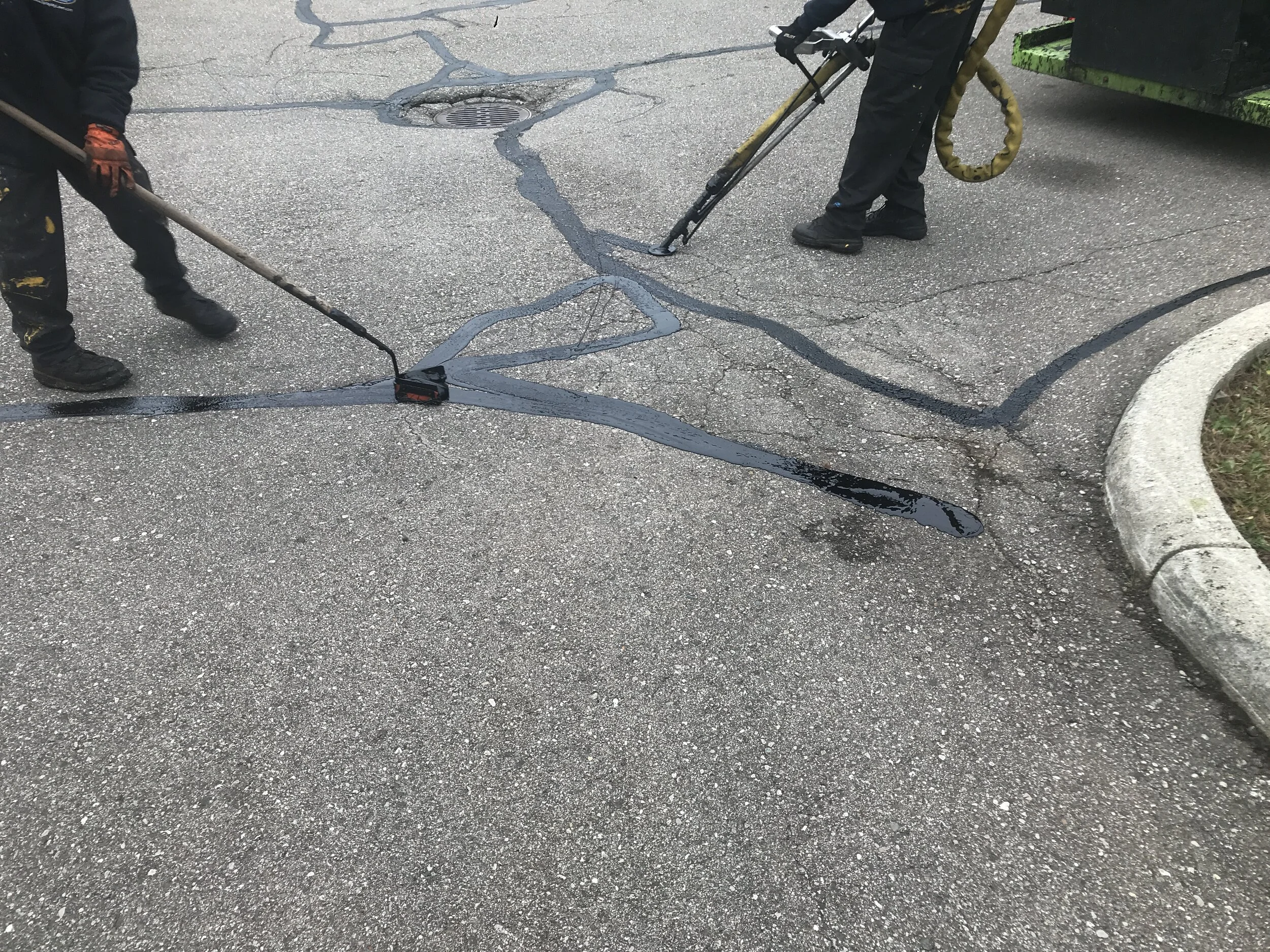Sealcoat FAQ'S
1. Why should I have my pavement sealcoated?
2. How often should asphalt be sealed?
3. Will sealer make the pavement slippery?
4. How should the sealer be applied?
5. Can sealer fill cracks in pavement?
6. What causes scuff marks in the freshly sealed asphalt?
7. How many coats of sealer should be applied?
8. What is hot-pour crack sealer?
9. What is the difference between hot-pour and cold-pour crack sealants?
10. Can I change to a different striping layout?
11. Is there a specific type of paint that should be applied to fresh sealer?
12. Will I have to close my business while the work is performed?
13. You sealed my driveway and I can see tire tracks. Is this normal?
1. Why should I have my pavement sealcoated?
Besides making your parking lot look much better, sealers protect asphalt from the destructive elements of weather, gas, oil and other chemicals that damage the paved surface.
2. How often should asphalt be sealed?
Asphalt should be sealcoated every two to three years. The amount of traffic is one deciding factor. Surfaces the receive light traffic, like home driveways and small businesses, require re-coating less frequently than parking lots receiving moderate to heavy traffic.
3. Will sealer make the pavement slippery?
This is a great question. Pavement sealer will not make the surface slippery if applied properly. We use a sand-slurry mix of pavement sealer. Silica sand is mixed into the sealer at a rate of 3-8 pounds per gallon of sealer depending on the quality of the sealer you use. Not all contractors use this type of mix, so be sure you find out if sand is mixed into their material. If sealer is applied without sand mixed into the sealer, then yes, your parking lot will be very slippery. This is a major liability issue for business owners.
4. How should the sealer be applied?
Sealer should be applied by either hand or squeegee machine for the first coat, and the second coat can be sprayed. We always apply the first coat with a nylon brush applicator for smaller jobs, or a squeegee machine for larger ones. This way, we are sure the sealer is able to get down into the asphalt better. We then spray the second coat to give you a nice, uniform looking finish.
5. Can sealer fill cracks in pavement?
No, sealer will not fill cracks in the pavement. Larger cracks should be sealed with a hot rubber crack sealer prior to sealing.
6. What causes scuff marks in the freshly sealed asphalt?
Scuffing usually occurs on hot days during the first month after the sealing has been done. This is a temporary thing and will blend back into a smooth looking job after time. The best way to avoid scuffing is to be sure your vehicle is moving before turning the wheels.
7. How many coats of sealer should be applied?
One coat of sealer is more than sufficient for the average home driveway. Two coats of sealer are recommended on most parking lots receiving moderate to heavy traffic. A third coat of sealer is recommended on parking lot entrances and drive lanes where excessive wear occurs due to constant turning and heavy traffic.
8. What is hot-pour crack sealer?
Hot-pour crack sealer is a flexible, rubber-like product that starts out as a solid, rubber block or cube, and is melted down in a special melter. Once melted, the sealer is applied over the cleaned out crack in a three-inch wide band. Once cooled, it can be sealed over, or driven on without any problems.
9. What is the difference between hot-pour and cold-pour crack sealants?
Hot-pour crack sealer is melted and applied, then cools to a pliable, rubber-like consistency, allowing it to expand and contract with the crack. Cold-pour crack sealers can be a water or asphalt based product that is applied to cracks in a liquid form, and then dries to a solid. Cold-pour crack sealers usually do not perform as well, due to their lack of flexibility when dried.
10. Can I change to a different striping layout?
Yes, we can change your existing parking lot layout if you wish. To do this, you must first have the old lines painted over with traffic blackout paint. A word of caution....the old layout lines will most likely be discernable as a dark shadow-like outline under the sealer.
11. Is there a specific type of paint that should be applied to fresh sealer?
The only types of paint that should be used on a freshly sealed parking lot are latex or acrylic latex waterborne traffic paints. These types of paints will not discolor like oil based and chlorinated rubber based paints.
12. Will I have to close my business while the work is performed?
No, we will do our best to keep your business open and running while the work is being performed. A lot will depend on the size and number of access points available to enter the building. If possible, we will do work when the parking lot is not being used.
13. You sealed my driveway and I can see tire tracks. Is this normal?
Yes. This is a temporary situation due to the weight of vehicles moving the sand around. We add sand to our sealer to help fill in cracks and to produce an anti-skid surface. Usually, after a couple of weeks, these will blend in and you will not see them.

